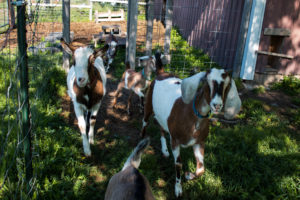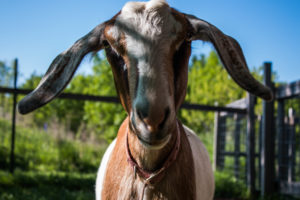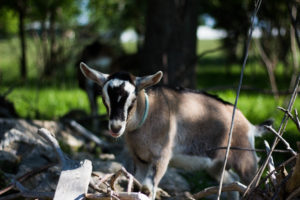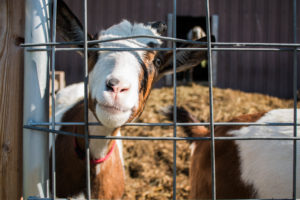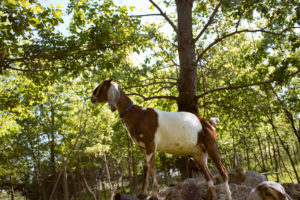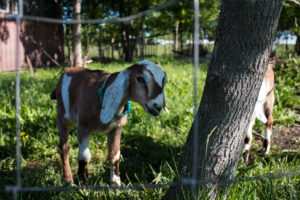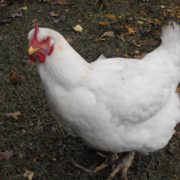Getting Your Goat….Milk
Congratulations! You’ve done your research and are ready to try goat milk. Where will you find it?
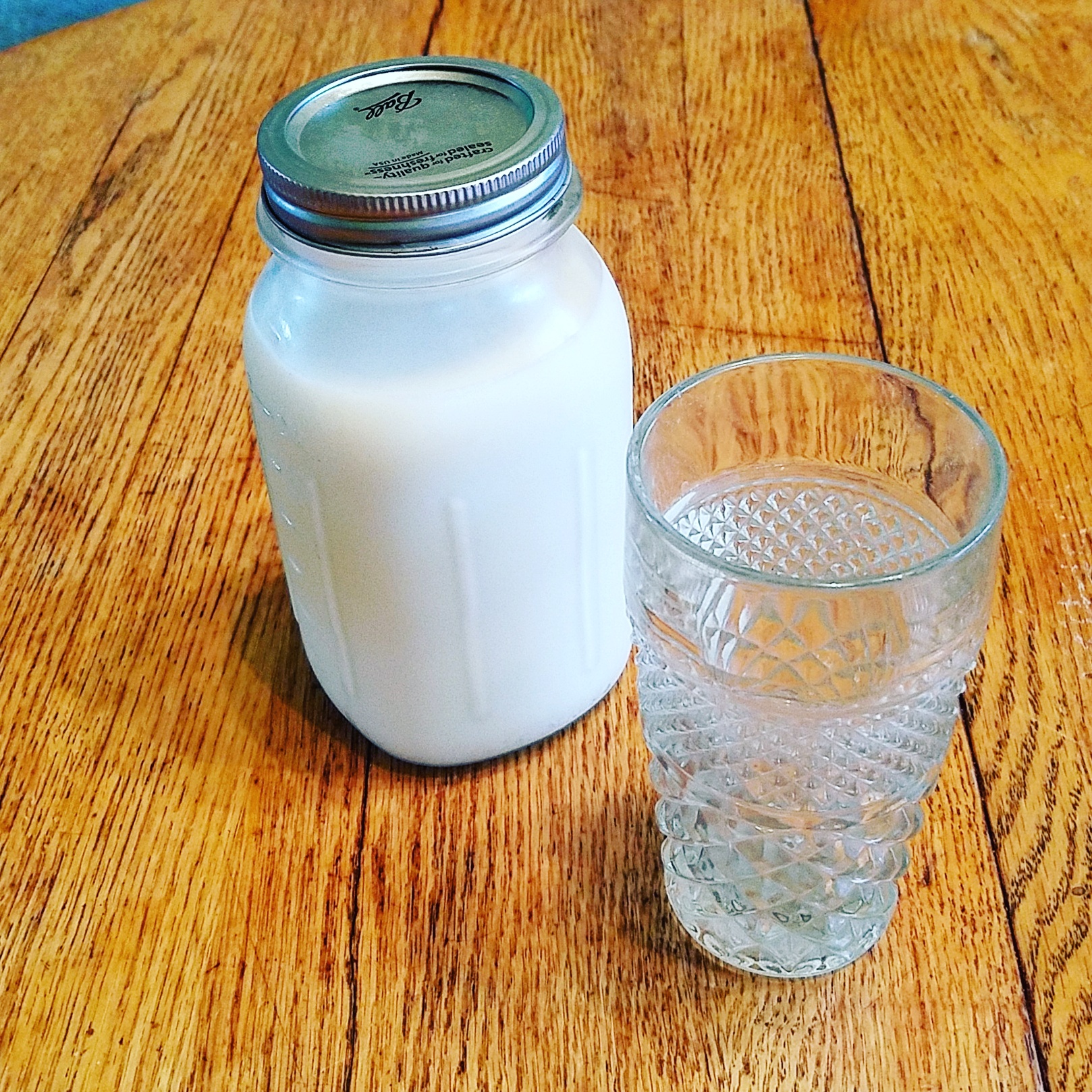
Cold, fresh goat milk
It depends on your choice: pasteurized or raw? If you will be using pasteurized milk, you will find it and other goat milk products in many stores as its popularity continues to increase. Raw milk is another story.
If we lived in Oregon I could buy raw goat milk at the local grocery store or even from a vending machine. In Nebraska, I could get it at a farm store; in Georgia it can only be sold as pet food; and in Montana it is illegal to distribute it at all.
In Michigan, we are able to provide milk for our customers through herd shares. My customers purchase a goat or a “share” of a goat. For a monthly fee I provide my services of boarding, feeding, and milking their goat. Once a week, they come to the farm to pick up their portion of the milk.
Under Michigan’s policy, established in 2013 by the Fresh Unprocessed Whole Milk Workgroup, there must be a dated, written contract between me and each shareholder that covers at least these key points:
- We must be able to directly communicate at any given time.
- The milk can only come from our farm, and shareholders must come to the farm for their milk.
- I am not required to be licensed and the state does not inspect our farm. In return, the contract covers only the raw milk. It cannot be sold to shareholders in the form of a product such as cheese, yogurt, or butter. These could be sold by me only if I were a licensed dairy.
- The milk cannot be sold to a third party.
- Our contract cannot in any way imply the sale of milk but must be written in a way that indicates the milk is already owned by the shareholders–they are just picking it up.
For help, I turned to the Farm to Consumer Legal Defense Fund, http://www.farmtoconsumerlegaldefensefund.org. This wonderful organization helps farmers like me with legal advice and services. They kindly explained Michigan’s policy to me and then designed and wrote my contracts to meet Michigan’s requirements. What a relief to know that as long as we abide by the rules, my shareholders and I do not need to worry that I might be shut down.
Although the regulations may seem tedious, they were written with good intent–for the health and safety of both the farmer and customer. If someone were to become sick from our milk, the source of their illness would be easy to trace.
As you look for a producer of local raw milk, here are some helpful suggestions:
*Contact Farm to Consumer Legal Defense Fund. On their website you will find a helpful, interactive, national map, called “Raw Milk Nation” that shows and explains each state’s raw milk policy. The map is updated regularly as states continually review and revise their laws. Contact FTCLD’s friendly, responsive staff for any questions you might have.
*The quality (and safety) of raw milk is based on these factors: the environment and health of the goats; the diet of the goats; and the handling of their milk. Before signing a herd share or even buying from a farm store, try to visit the farm and ask questions. Are the goats clean and housed in a healthy environment? Are they given any hormones or medications that would affect the milk? Are the goats regularly tested for mastitis and any other diseases? What are they fed? What about the milking station–is it clean? What happens after milking? How is the milk handled? Are you responsible for cleaning and sterilizing your own jars?
*Ask to taste a sample of the milk. Does it have an “off” odor? Is the flavor too “goaty?” Fresh, raw milk if handled properly, should last at least a week before souring.
*Be prepared to abide by the rules. Please do not ask the farmer to compromise on state regulations. In Michigan, I cannot bring the milk to you and I cannot sell processed products to you. Most farmers, including myself, work hard to gain respect from the state and from their community. To be allowed to do what we love, our standards and practices must be above reproach. Be a part of the solution, not the problem.
Have I piqued your interest? Here’s some good news to sweeten the deal: I still have herd shares available for 2017. Call or email me to plan your visit to Love Led Farm and ask for a taste of cold, refreshing goat milk.
And now that you’ve found a local source for your milk, what will you do with it? Next week, I will give you some ideas.
_________________________
Calling All Meat Bird Customers!!
Please note:
**All available chickens for June 30 have been sold!
**To accommodate the second flock’s outdoor housing needs, we had to move our second Pick-Up Day to August 4. If you have already ordered from the this flock, I will contact you personally as a reminder.
**Our third and final Pick-Up day will be September 1st.
It’s not too soon to place your order. These birds will sell quickly.
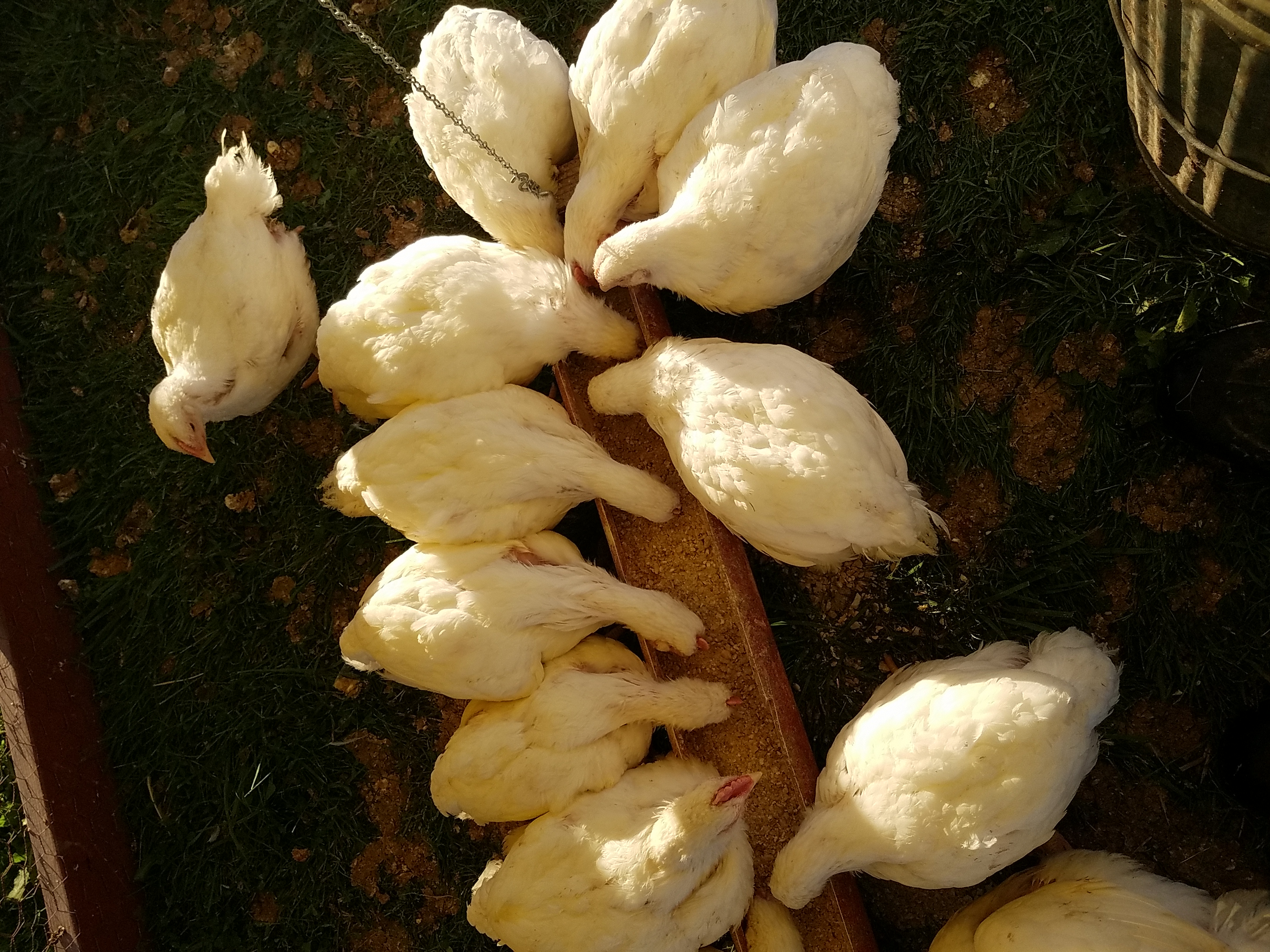
Our June 30th birds are looking good!


